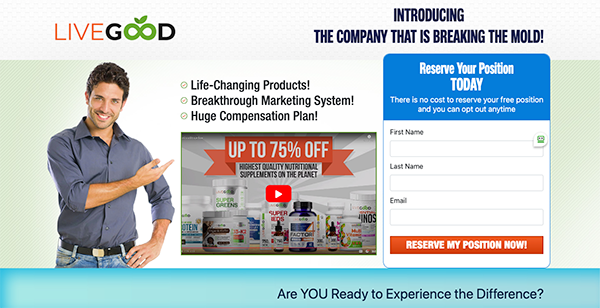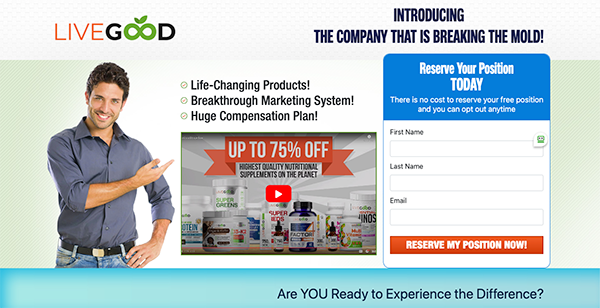With these tips you can get more accomplished and grow your online business faster without spending a fortune.
Mind you – some may seem too simple. But years of trial and error have taught me that these methods flat out work at bringing about extraordinary results.
1. Have a Plan – So many new online marketers simply start working on something without knowing where they’re going or what they hope to achieve (other than making money.) I think this is why Internet Marketers tend to hop from one thing to the next and have trouble settling down. But if you simply take the time to write out your plan of action (what you’re going to do and how you’ll do it) in a step-by-step fashion, then you’ll have a guide that you can follow. It will save you so much time and money in the long run, and make things that much easier as well.
2. Narrow Your Niche – One of the biggest mistakes is trying to make everyone your customer. By targeting a niche, it makes it easier for you to find your customers and easier for them to say yes to your offers. One example I like to use is the IM niche itself. If you’re marketing to ALL online marketers, you’ve got a HUGE niche with a lot of competition. But if you focus on teaching chiropractors how to market their businesses online, you’ve now got a tightly focused niche. Rule of thumb: The more focused the niche, the more you can charge for your products and services. Paradoxically your click through and conversion rates will be higher as well; thus you can earn more with fewer customers.
3. Fine Tune Your Slogan – Sure, you’ve picked a great name for your business (I hope) but what about your slogan? This is the sentence or sentence fragment found on your header, and it’s also what you tell people when they ask what you do. It needs to be short, clear and compelling. “Teaching Chiropractors how to optimize their online efforts resulting in a more diversified clientele and enhanced revenue” is NOT a good slogan. “Helping Chiropractors get more clients through simple marketing methods” is much better. It’s clear, it’s direct, the benefit is unmistakable, and it’s how people naturally speak.
4. Reach Out – Find the movers and shakers in your niche and reach out to them. Blog about them, buy their products, get on their mailing lists, and yes, email them. The more people you know in your niche, the better. You can ask them questions, become their affiliate, and eventually ask them to promote your products, but only when you’ve built the relationship.
5. Network at Live Events – Sometimes working online isolates us so much, we forget that there are real live PEOPLE out there who want to meet us. That’s why it’s good to go to as many live events as you can afford, not just for the training that might be offered, but for the networking opportunities. Take a stack of your cards and try to meet as many people as possible. Get their cards, or write down their info if they don’t have a card. One note: Do not try to sell anybody on anything at these events. Your job here is to make contacts – setting up JV’s and such comes later when they know, like and trust you.
6. Follow-up – You know all those business cards you collected at the event? Follow up with each one within seven days to continue building the relationship. Follow up by phone or email, or both. Remind them of your conversation and pick up where you left off.
7. Use Both Sides Of Your Business Card – You’re at events, handing them out anyway – why not use BOTH sides of the card? On the second side you can add a testimonial, a link to a free report, and invitation for a free consultation, etc.
8. Crank Up Your Signature – Use your email signature to promote your business. Name and contact info are a great start, but you need more. For example, add a link to your webpage with an offer for an excellent freebie. And use the offer in your signature line on forums, too, where it’s allowed.
9. Billboard Your Vehicle – If appropriate to your business, get inexpensive vinyl signs for your vehicle’s doors and rear to bring in new customers. Or if it’s in your budget, spring for the full coverage auto graphics that are so eye-catching, like ones you find at adsonwheels.com
10. Focus On The List – Really this should be titled: Become Obsessive About Building Your List With The Highest Quality (Best Targeted) Prospects Possible. Your first priority in list building should be QUALITY, not quantity. That said, don’t miss a chance to add to your list if the prospects are a good fit for your business.
11. Work Your List – Send them great info on a very frequent basis (3 to 5 times per week) so that you become the “go-to expert” in their eyes. Once they know you and trust what you say, you can recommend anything and get a great conversion, so be sure to only recommend the very best products that they will truly benefit from.
12. Create Fun Promotions Around Silly Holidays – While most every business is trying to leverage major holidays into sales and events, you can stand totally apart from the crowd (and avoid the competition on the big holidays) by focusing on the lesser known holidays. For example, Opposite Day, National Hugging Day and Do a Grouch a Favor Day. First, you need to find the holidays… Google something like, “strange holidays” or “weird holidays” or even “crazy holidays.” and you’ll find plenty of options to choose from.
Now choose a holiday that’s coming up soon, and think of how you can design a simple, eye-catching promotion around it. It doesn’t have to be anything too creative. For example, on Opposite Day you could send your list a product that they only pay for after they receive it and if they like it. That would certainly stir up some attention, and if you promote it in advance it could also grow your mailing list.
13. Hold Contests – You might give away your new digital product or anything else your prospects might like, in exchange for whatever you choose. It could be a new sign up to your mailing list, a suggestion for a new product, the answer to a trivia question (not found on the Internet), etc. If your prize is big enough and awesome enough, ask your readers to forward your contest to others in exchange for extra entries, and it could go viral, providing you with hundreds or even thousands of new prospects. And certainly it will help you with getting your name out there as well.
14. Volunteer Your Services – If you provide a service such as building websites or writing sales copy, volunteer to do it for a non-profit and grab yourself some great publicity in the process.
15. Stage a Launch – New product? New website? New service? Create a launch to turn it into a real event that gets people talking.
16. Take a Stand – If you want customers to feel strongly about you and your products, you need to take a strong stand that they can relate to. Most marketers are afraid to take a stand because they’re trying to appeal to everyone. The problem is, when you appeal to everyone, you end up appealing to no one. Guaranteed no matter what your niche might be, there are positions and opinions that you hold that you can share with your readers.
Taking a stand will bond you to the readers who agree. Those who don’t agree will also want to take a position, and in so doing they also bring attention to you. Think Rush Limbaugh – his fans are devoted and his enemies provide him with tons of free publicity. However, you always want to remain 100% professional – do not name call or denigrate others under any circumstance because it will only hurt you if you do.
17. Make Podcasts and Videos – Microphones and video cameras are cheap, and the payback can be huge. By dispensing great info via voice or video, you’re creating Internet ‘ambassadors’ that can bring you new prospects from places you never expected. BONUS: Someone who joins your list after listening to your podcast or watching your video is far more likely to open and read your emails in the future.
18. Build an Alliance With Non-Competitors – Look for non-competitors who service the same niche you do. Make contact and see about promoting each others products to your own lists, thereby expanding both your sales and your list of new customers and prospects.
19. Build an Alliance With Your Competitors – This works especially well in service niches because successful people have more business than they handle. Plus one competitor might specialize in a certain size or type of project that you prefer not to handle and vice versa. When you collaborate with your competitors, you can sometimes surprisingly double your business with very little effort.
20. Add Value – Whether you’re offering an affiliate product, your own product or just giving info away to build your list, add value. In the case of an affiliate offer, give away something that enhances the original product. In the case of your own product, give away the first chapter or two as a sample. And if you’re simply giving something away to build your list or as an added benefit to your readers, give them additional resources where they can get even more great information or the tools they need to implement your strategies.
21. Use Testimonials – Not just testimonials for the specific product you’re promoting, but also testimonials for yourself, your business, and even your methods. For example, you might use the left or right column of all your sales pages and web pages for testimonials from happy customers of all your products. And inside of your sales letters, place testimonials from people who back up what you say, such as experts who’ve done research that corroborate what you’re telling people in your sales message.
22. Ask for Referrals – This is one you want to be consistent on. Ask your readers to pass along your emails (make sure there is a link to your sign-up page) ask followers to retweet your messages, and ask fans to “like” your pages and messages. Next, put a referral program in place that rewards your customers for referring new, paying customers. And lastly, simply make it a policy to consistently ask and remind, in a very friendly, gently manner. Remember to always show your immense appreciation for those customers who do refer new business your way.
23. Do Teleseminars or Webinars – Teleseminars and webinars are excellent ways to connect with your customers and build your lists. You might do Q and A sessions or present a certain topic. Be sure to give lots of information, and save any product pitches for the very end. If you’re doing the webinar for a joint venture partner’s list, be respectful of the opportunity and make your partner look great for having invited you to speak to their people. You’ll build tremendous rapport with your listeners, and if you’ve presented them with great info, they won’t mind a little product pitch at the end.
24. Send Out A Newsletter On A Regular Basis – You might have a list and you might send them offers – but do you send them real news and stuff they can use? If not, you might want to start. By sending them great tips they can use, they will be more likely to open and read your future emails, thus increasing your conversion rates on the offers you do send.
25. Take Your Best Shot – A professional photograph of yourself is something you can use everywhere – Facebook, Twitter, LinkedIn, your websites, article directories, business directories, etc. Build recognition by using the same great photo and it will pay off.
26. Blog – If you don’t have a blog yet, start one. Yes, even if you have a website, you should still have a blog because it allows you better connect with your community and create a personal connection. And btw, Google tends to love blogs, so if you set it up correctly you may also find you get some free traffic from your blog efforts.
27. Use Keywords – If you want to get found and ranked by Google, you need to use the keywords that people are looking for and that you have a chance of getting ranked on. It’s not always an easy balance, but investing in a good keyword tool and tutorial can help.
28. Bookmark It – Social bookmarking is a good way to help others find your best articles and blogposts. Join sites such as del.icio.us, reddit, digg and mix, and then bookmark your best stuff as well as other people’s best articles, pins and blog posts.
29. Do Press Releases – Do you have some real news to report? By all means do a press release and publish it on top press release websites.
30. Post in Forums – This comes with one caveat: Monitor the time you spend on forums or it can eat up your entire day. Spending 30 minutes a day posting on the best forums in your niche is a great way to increase your visibility. Add a link to your website in your signature and info about your business in your profile. This way when other forum members find your posts helpful, they’ll have somewhere to go to sign up for your list or just get more information about your business.
31. Capitalize on Social Media – Facebook, Twitter, YouTube and LinkedIn are great places to find people in your niche, to network and to build your own list. An entire library can be written about using Social Media in your business, so I’m simply adding this one in as a reminder.
As you can see, there are a multitude of ways to promote your business without spending a fortune. An open mind and a little creativity go a long way towards reaching out towards others, thereby getting the business to come to you.











